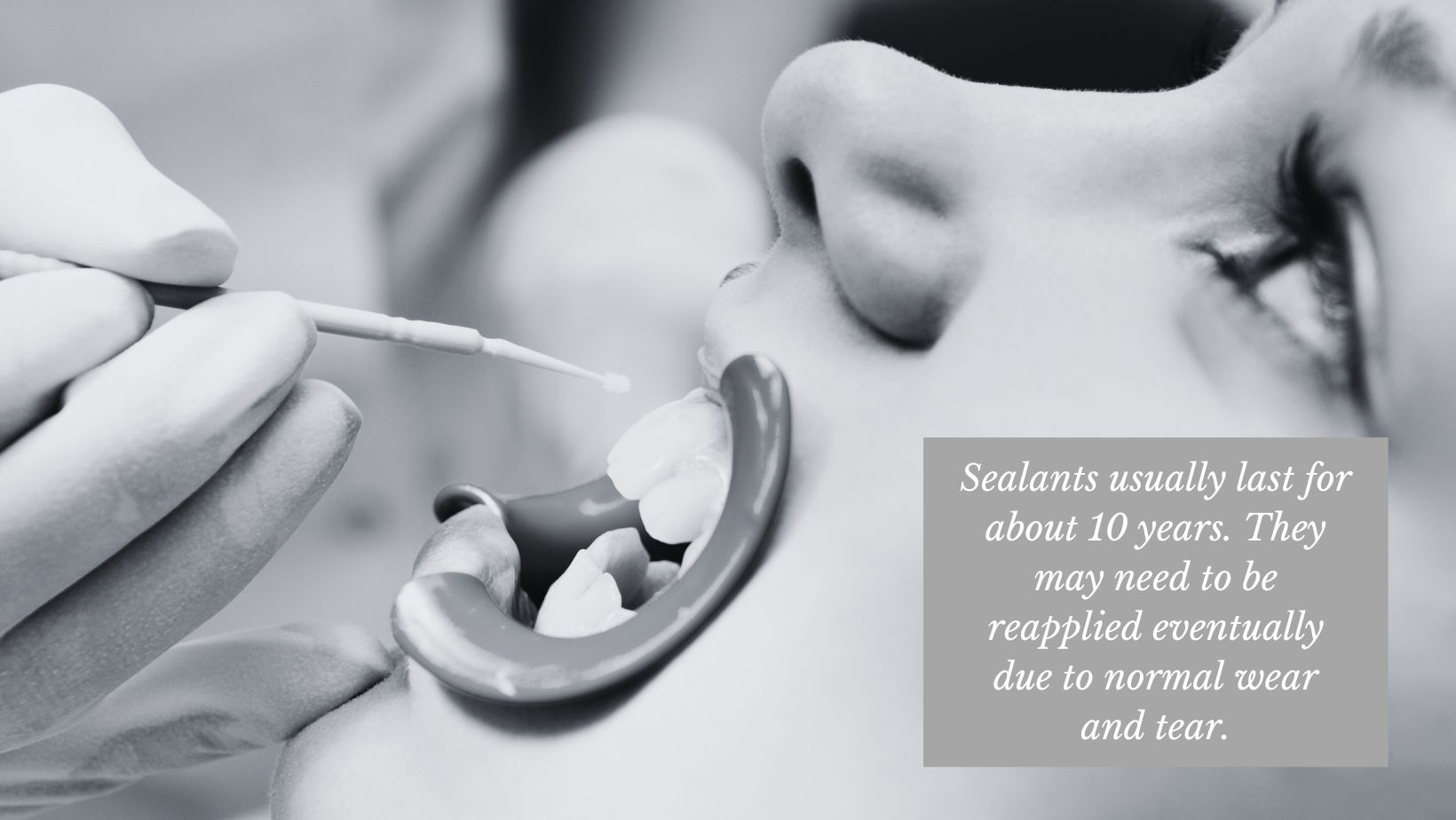This updated post was originally published on June 4, 2018.
During a recent dental visit, your dentist may have recommended sealants for you or your child. But what exactly are dental sealants, and why are they important?
A dental sealant is a thin, protective coating your dentist applies to the chewing surfaces of teeth to protect them from cavities. These sealants act as a barrier that helps prevent tooth decay. Dental sealants have proven highly effective at preventing cavities, and getting them is quick and painless.
What Are Dental Sealants?
Dental sealants are a thin resin coating applied to the chewing surfaces of the back teeth (molars and premolars). These surfaces have pits and grooves that can trap food particles and bacteria, and this can lead to cavities. This is especially true for patients whose teeth have deep grooves as well as for children, who are still learning proper brushing habits.
Sealants act as a barrier by sealing off these areas, preventing food and bacteria from getting stuck and causing tooth decay.
Dental sealants are highly effective in preventing cavities, especially for children and teenagers who are at higher risk for tooth decay. According to the Centers for Disease Control and Prevention (CDC), sealants can reduce the risk of decay in the molars, where most cavities occur, by nearly 80% during the first two years. They continue to offer protection in the years that follow.
What is it Like to Get Dental Sealants?
If your dentist is recommending sealants, likely, you or your child has already had a dental cleaning and exam to check for and fix any existing cavities. During the sealant appointment, some children may be nervous or have trouble sitting still, but dentists and their teams know how to put them at ease.
In fact, sealants are a great way to help children feel comfortable receiving dental care since getting them is quick and painless.
First, the dentist cleans and dries the teeth and applies a special gel to help the sealant bond to the tooth. Then, they paint the sealant material onto the tooth surface. Finally, they use a special curing light to harden the sealant. The curing tool looks like a small flashlight at the end of a tube. The light helps to speed up the reaction that hardens the sealants. Patients do not feel the light itself, and a shield keeps the light out of the patient’s eyes.
Once in place, sealants can last for several years.
Dental Sealants FAQ
Here are some common questions patients and parents ask about dental sealants.
How long do sealants last?
Sealants usually last for about 10 years. They may need to be reapplied eventually due to normal wear and tear. The dentist will check the condition of sealants during regular dental visits and recommend reapplication if necessary.
What are the benefits of dental sealants?
Sealants are proven to prevent cavities. Both the American Dental Association and the CDC have done studies that show fewer cavities for patients who have dental sealants.
This ability of sealants to prevent decay offers health benefits and cost savings. Dental decay can lead to weaker teeth and more significant health issues.
Sealants cost less than fillings, which means they can help patients save money in the long run.
And, getting sealants is a quick, non-invasive procedure that doesn’t require any drilling or removal of tooth structure. Fillings require the dentist to drill into the tooth to remove decayed areas before the filling material can be placed.

When should sealants be applied?
Sealants are usually recommended for back adult teeth as soon as they come into the mouth. This is usually around age 6 for the first set of molars and age 12 for the second set. Some pediatric dentists also recommend sealants on baby teeth, since the ages between 5 and 11 are the most common for getting cavities.
Though they are more commonly recommended for children, teens, and adults without decay or fillings on their molars can also benefit from sealants.
Is getting sealants painful?
No. Getting sealants is completely painless. There is no numbing or drilling involved, and the process is quick and easy.
What do dental sealants look like?
Once in place, sealants are difficult to notice. They are made of thin, tooth-colored resin that blends in well with the look of the patient’s teeth.
What do sealants feel like in the mouth?
Sometimes patients notice the surface of a sealed tooth feels smooth against their tongue. It does not take long to get used to the feeling.
When can I eat after getting sealants?
Patients can return to their routine as soon as the sealant appointment is over. They can eat and drink right away.
Are dental sealants safe?
Dental sealants are safe and effective when applied by a qualified dental professional. There may be a rare allergic reaction to the sealant material in some individuals, but this is uncommon.
How much do dental sealants cost?
Sealants usually cost between $30-$60 per tooth depending on the dentist and their location. This is less than a filling, which can cost between $100-$150 or more.
Are sealants covered by dental insurance?
Many dental insurance plans cover the cost of sealants, especially for children and teenagers. However, coverage can vary, so it is best to check with your insurance provider to understand your specific plan’s coverage for sealants.
Do sealants always work?
Though sealants have proven very effective for preventing cavities, they are not a guarantee. Even with sealants, patients need to practice good dental hygiene that includes thorough brushing and flossing each day. They also need to see a dentist for regular cleanings and checkups. Finally, proper nutrition can play a part in preventing cavities.
Talk to a Dentist About Sealants
The best way to get questions about sealants answered is to discuss them with your dentist. They will go over the pros and cons of dental sealants and help you make the best choice for you and your child. To find a dentist and get the process started, try our online search tool.


